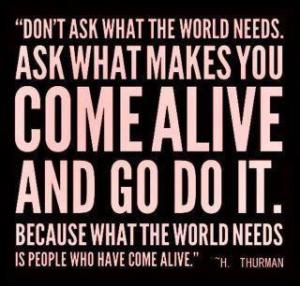“One sign of an excellent speech? ‘Can people repeat something they heard, word for word?'” – Sam Horn, Intrigue Expert
Neil Gaiman’s commencement speech was an instant classic.
Why?
It’s original, evocative and revealing.
Gaiman confesses that he ignored the wise advice from fellow author Stephen King to “enjoy the ride of his success.”
However, there’s an even more important reason Gaiman’s 20 minute talk has gone viral and been turned into a book which is coming out next week.
The popular author condensed his speech theme into a single sound-bite that is easy to repeat.
Make Good Art.
Think about it.
How many conventions and graduations have you attended? How many presenters and commencement speakers have you heard? Dozens? Hundreds?
Can you repeat ANYTHING they said?
If you can’t; that means they’re out of sight, out of mind. Their message had little or no enduring impact.
What’s an important message you want to share with the world?
If you want people to remember it and act on it; is YOUR responsibility to distill its essence into a repeatable sound-bite.
Successful film-makers know the importance of this.
“Show me the money.” “I’ll be back.” “You can’t handle the truth.” “You’re gonna need a bigger boat.”
You probably remember those movies even though it’s been YEARS since you’ve seen Tom Cruise, Arnold Schwarzenegger, Jack Nicholson and Roy Scheder utter those lines in the movies Jerry Maguire, the Terminator, A Few Good Men and Jaws.
Those movies are STILL top-of-mind decades after their release because their screenwriters crafted memorable lines that have legs.
In fact, check out the top movie quotes of all time. Almost ALL are 7 words or less.
http://en.wikipedia.org/wiki/AFI’s_100_Years…100_Movie_Quotes
What’s this mean for you?
Look over your upcoming presentation.
Does it have a resounding idea that has been distilled into a pithy 7 words or less?
Have you condensed your theme into a title or sound-bite people can repeat, word for word?
If so, good for you. You have just increased the likelihood listeners will become YOUR word-of-mouth advertisers because they will be able to remember what you said and recommend it to others.
If not, you might want to pick up a copy of POP! and study Section IV on how to be PITHY with its chapters on:
* Make Your Language Lyrical with Alliteration
* Put Your Sound-bite in a Beat to Make it Easy to Repeat
* Make it Sublime with Rhyme
This is not petty. You’re pouring hours (and lots of money?) into designing and delivering a presentation that will hopefully impact everyone in the room.
Why not invest the time and mind to POP! your message into a memorable sound-bite so people are still being positively impacted by it … years after they’re out of the room?




